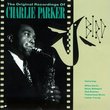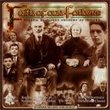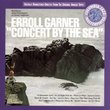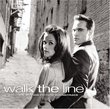| All Artists: Vladimir Horowitz Title: Vladimir Horowitz At Carnegie Hall-The Private Collection: Mussorgsky & Liszt Members Wishing: 0 Total Copies: 2 Label: Sony Classics Original Release Date: 1/1/2009 Re-Release Date: 6/30/2009 Genre: Classical Styles: Forms & Genres, Sonatas, Suites, Symphonies Number of Discs: 1 SwapaCD Credits: 1 UPC: 886974992523 |
Search - Vladimir Horowitz :: Vladimir Horowitz At Carnegie Hall-The Private Collection: Mussorgsky & Liszt
 | Vladimir Horowitz Vladimir Horowitz At Carnegie Hall-The Private Collection: Mussorgsky & Liszt Genre: Classical
In 1988, Vladimir Horowitz donated a treasure trove of original recordings to Yale University his Private Collection. Recorded live at Carnegie Hall between 1945 and 1950 and unreleased until now, these stunning performan... more » ![header=[] body=[This CD is available to be requested as disc only.]](/images/attributes/disc.png?v=a4e11020) ![header=[] body=[This CD is available to be requested with the disc and back insert.]](/images/attributes/disc_back.png?v=a4e11020) ![header=[] body=[This CD is available to be requested with the disc and front insert.]](/images/attributes/disc_front.png?v=a4e11020) ![header=[] body=[This CD is available to be requested with the disc, front and back inserts.]](/images/attributes/disc_front_back.png?v=a4e11020) |
Larger Image |
CD DetailsSynopsis
Album Description In 1988, Vladimir Horowitz donated a treasure trove of original recordings to Yale University his Private Collection. Recorded live at Carnegie Hall between 1945 and 1950 and unreleased until now, these stunning performances capture Horowitz at the peak of his technical and musical glory. Similarly Requested CDs
|
CD ReviewsOutstanding even by Horowitz's high standards Hank Drake | Cleveland, OH United States | 06/30/2009 (5 out of 5 stars) "Sony has dipped into the archives at Yale University for this first ever release of performances by Vladimir Horowitz at the height of his powers. Horowitz was well known for his transcriptions of such works as Liszt's Hungarian Rhapsodies and Sousa's Stars and Stripes Forever. But he faced criticism when he altered significant portions of Mussorgsky's Pictures at an Exhibition - which was and remains far better known in Ravel's transcription for orchestra. Truth be told, Mussorgsky's original version is one of the most poorly written pieces - in terms of writing for the instrument, not musical ideas - in the piano repertoire. Before Horowitz, few pianists even bothered playing it at all. Those that did often made alterations, such as Moiseiwitsch in 1945. But it took someone with the guts and imagination of Horowitz to undertake a wholesale rewriting of the piece - which angered a lot of purists. In fact, Horowitz's changes are far more subtle than the firecracker like passageworks he afforded in his other arrangements. Previous to this release, there were two issued recordings of Horowitz playing his arrangement of Pictures. The studio recording, from 1947, and a live Carnegie Hall performance, from 1951. Most reviewers have tended to prefer the 1951 recording, which has some incendiary passagework in The Hut on Fowl's Legs. I've been partial to the 1947 performance, which comes across as more of a single piece, rather than sectionalized. (Unfortunately, the 1947 recording has suffered from particularly poor remastering in BMG's Gold Seal Horowitz reissue.) The performance released here, from April 2, 1948, is more along the lines of the 1947 recording - although Horowitz, no doubt under the "battle-conditions" of live performance, does push tempo and articulation to extremes at times. Each Picture leads as part of the whole to the inevitable climax of the Great Gate of Kiev (appropriately, Kiev is the town where Horowitz grew up). The 1949 recording of Liszt's Sonata in B Minor is another matter entirely - this performance is like nothing you've ever heard. Neither the cheetah like sprint of Horowitz's famed 1932 recording nor the labored grandiloquence of his 1977 remake can compare with this overwhelmingly incendiary performance. There will no doubt be controversy here, as Horowitz cuts 22 bars from the central Recitativo section of the work - but this performance must be heard. The sound has been excellently restored by Jon Samuels. A few quibbles: At under 60 minutes, this disc is not well filled - and with the huge cache of unreleased material in Sony/BMG's vaults, there is no excuse. There was room for Horowitz's versions of Liszt's St Francis Walking on the Water and Balakirev's Islamey, also recorded at these concerts. And this CD, like many of Sony's new releases, is packaged in cheap paperboard - so handle with care. " Great performances: One reservation Dr. Steven R. Bennett | Baltimore, USA | 08/02/2009 (5 out of 5 stars) "I agree with the very informative comments and opinions in the other review of this release. My copy, also poorly packaged, was without any background information about Horowitz or these or other potential performances in this series. There were no performance dates for either work - only a one-liner about private tapes recorded between 1945-51. Shame on BMG Sony marketing staffs for this oversight. The sound, however, was quite acceptible - even vicerally exciting - given their age." Vladimir Horowitz at Carnegie Hall-The Private Collection: M Jost Robins | Central Florida | 08/29/2009 (5 out of 5 stars) "This was a gift to my son who is in his Sr. year at the University in Piano Performance. Horowitz is a master, as well as a legend, and we never tire of watching his DVDs or listening to his CD's. This CD was the frosting on the cake. Beautiful!
The Art of Piano - Great Pianists of 20th CenturyVladimir Horowitz At Carnegie Hall-The Private Collection: Mussorgsky & LisztHorowitz in Moscow" |

 Track Listings (18) - Disc #1
Track Listings (18) - Disc #1








